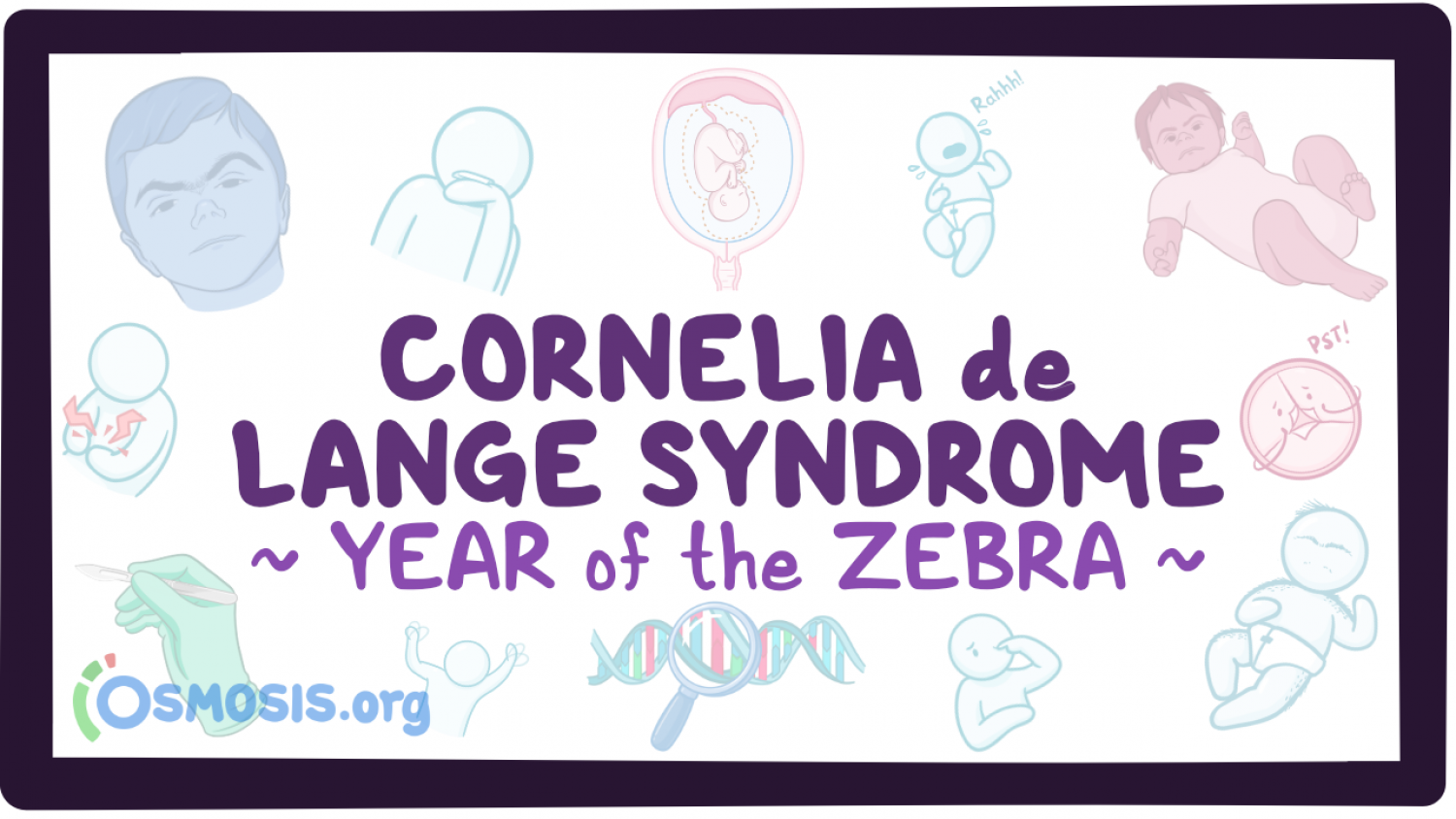
Rare Disease Education: Cornelia de Lange Syndrome
Editor: Kelsey LaFayette, DNP, RN, FNP-C
"When you hear hoofbeats, think of horses, not zebras,” is a common saying in medical education that means you should think of common conditions first, instead of rare ones, in making a diagnosis. “Rare” is a relative term though and about 7,000 rare, or "zebra," conditions affect more than 350 million individuals worldwide. Although these conditions collectively affect an enormous number of people, each of these conditions individually is rare enough that it can be difficult to secure the resources to study them and to develop treatments and cures. Likewise, awareness of rare conditions may be low and health care professionals may not be familiar with their signs and symptoms making it more difficult to reach a correct diagnosis and provide effective treatments.
To increase knowledge about rare conditions, Osmosis and the National Organization for Rare Diseases (NORD) have collaborated on an initiative to bring education and awareness to the public. We are excited to be a part of this initiative because we believe everyone deserves quality health care, no matter how rare their condition.
Zebra of the Week: Cornelia de Lange Syndrome
Every piece of a puzzle has a specific form and function. One changed piece can affect the whole, even if this piece is one of many. Similarly, changes in one of many genes can affect the whole of the body, in form and function.
Cornelia de Lange Syndrome is a rare genetic disorder that occurs in approximately one in every 10,000 live births. About seven genes have been found to be associated with this condition that can cause delays in physical development, a distinctive facial appearance, malformations of the upper limbs, and mild to severe intellectual disability. Some affected individuals may have hearing loss, heart defects, and an increased susceptibility to respiratory infections. Most children are diagnosed clinically after birth or in childhood and molecular genetic testing for mutations is available to confirm the diagnosis. Treatments vary depending on each child’s set of symptoms and their severity but in all cases early intervention is important in ensuring that children with Cornelia de Lange Syndrome reach their highest potential.
Meet Emily Turner
In PBS television’s "Spotlight on Cornelia de Lange Syndrome", inspiring individuals such as Emily Turner prove that they can fulfill their potential and reach new heights. The positive attitude is embodied in her phrase “I have Cornelia de Lange Syndrome, but it does not have me”. She now serves on the board of directors of the Cornelia de Lange Syndrome Foundation.
Watch a snapshot of her story above.
Organization Taking Strides
In 1970, a newspaper article about a child born with Cornelia de Lange Syndrome connected two families thousands of miles apart. This chance connection snowballed over 10 years into the founding of the Cornelia de Lange Syndrome Foundation in 1981. The Foundation’s mission is reflected in its slogan: Reaching Out, Providing Help, and Giving Hope.
Their activities include distributing reliable information to families and professionals caring for individuals with Cornelia de Lange Syndrome (CdLS), hosting conferences and gatherings where researchers and families can meet to exchange information, and participating in a wide range of events to raise awareness. They also provide a platform to share the stories of their CdLS Heroes. Each year the community grows by the hundreds as research, treatment, and understanding of the disease progresses. Visit their website to learn how you can help the rare disease community further.
More Information on Cornelia de Lange Syndrome
